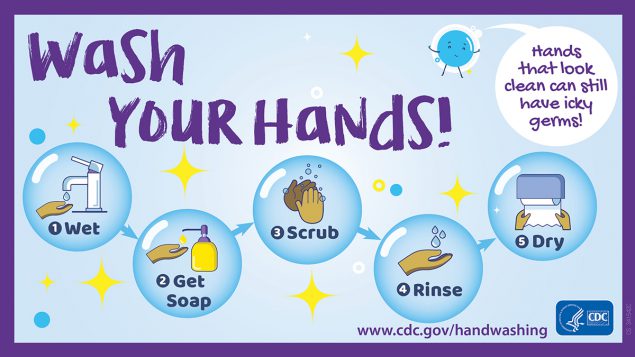Here are some tips from the Food Network on how to keep your family safe while cooking at home.
Do not rinse meat in the sink before cooking.
When you rinse meat in your kitchen sink, remember that water splashes everywhere — including on dishes in the sink and on counter tops — contaminating everything. According to USDA guidelines, it’s best never to rinse meat and poultry. Instead, cook them to the proper minimum internal temperature to ensure that any bad bacteria are destroyed.
Cutting boards.
Never cut raw chicken and then use the same knife and cutting board to slice fresh vegetables. Instead, have several cutting boards for different items to cut and clean in the dish washer. Wooden cutting boards are good for cheese and cracker trays and can be washed by hand with soap and water using a stiff-bristled brush. If any of cutting boards have too many grooves or just look too warped, discard them.
Wash your reusable cloth grocery bags and wipe down plastic-coated bags with antibacterial spray or wipes.
A survey conducted by the Home Food Safety program found that 85 percent of Americans aren’t washing their reusable grocery bags. The problem: Raw foods, including meat, chicken and eggs, leave potentially harmful bacteria inside those totes. And those bacteria can be transferred to produce if the same bag is reused without being cleaned.
Really wash your hands.
Not using soap, wiping on a contaminated towel and not washing long enough are typical sins when it comes to hand washing. And people often don’t wash their hands after mundane tasks such as talking on the phone, going to the restroom or touching their hair or face.
Follow these CDC Five Steps to Wash Your Hands the Right Way
Washing your hands is one of the most effective ways to prevent the spread of germs. Follow these five steps every time.

- Wet your hands with clean, running water (warm or cold), turn off the tap, and apply soap.
- Lather your hands by rubbing them together with the soap. Lather the backs of your hands, between your fingers, and under your nails.
- Scrub your hands for at least 20 seconds. Need a timer? Hum the “Happy Birthday” song from beginning to end twice.
- Rinse your hands well under clean, running water.
- Dry your hands using a clean towel or an air dryer.
Chill, refrigerate and freeze food properly.
Refrigerate perishable foods within 2 hours:
Your refrigerator should be set to 40°F or below and your freezer to 0°F or below.
Never leave perishable foods out of refrigeration for more than 2 hours. If the food is exposed to temperatures above 90°F (like a hot car or summer picnic), refrigerate it within 1 hour.
Leftovers should be placed in shallow containers and refrigerated promptly to allow quick cooling.
Never thaw or marinate foods on the counter. The safest way to thaw is in the refrigerator.
Freezing does not destroy harmful germs, but it does keep food safe until you can cook it.

No comments yet.